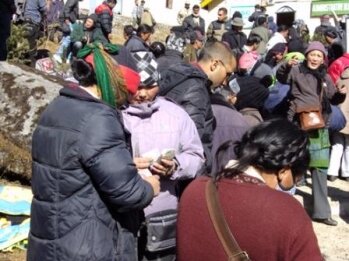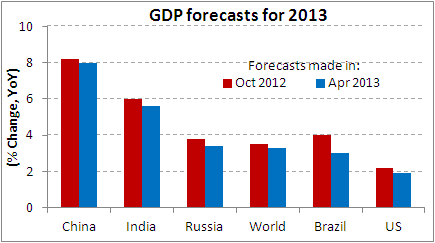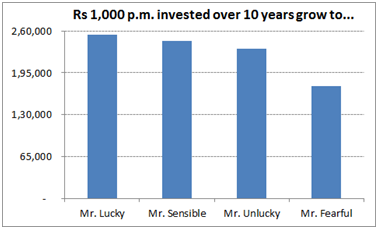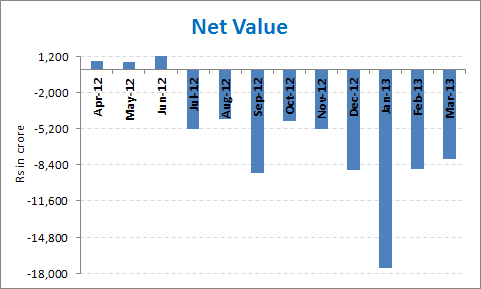April 26, 2013 6:13 pm
An Indian road trip: From Calcutta to Sikkim
In the second of our series on road trips, Minty Clinch braves tumultuous traffic to explore the hill stations of West Bengal and Sikkim
The streets of Darjeeling reverberated to the sound of honking as the traffic surged, spluttered and stopped. The pedestrians flowed more freely than the vehicles, a peacock tide of saris, old-fashioned school uniforms, agricultural workers in golden wellies, stray dogs and goats. A day much like any other, except one of many hands hard to their horns was mine.
Self-drive rentals for foreigners are new to India and almost unknown in West Bengal. Back in the UK, friends sounded appalled at my plan for a fly-drive trip to northeast India. I explained that I would have an expert co-pilot in Richard Dunwoody, three times champion steeplechase jockey-turned professional photographer. As a double Grand National winner, he is expert at squeezing fast-moving objects through narrow gaps, a spatial awareness talent that is vital when driving in India.
IN ADVENTURES
- The expert selection Ultra-marathons
- Great Drives Alone on the ring road
- Tall-ship sailing in the Canary Islands
- A sub-zero safari
We had flown to Siliguri, an hour north of Calcutta, where our car was waiting – not the classic Hindustan Ambassador I’d originally envisaged but a Toyota Innova, a wimpy-sounding people-carrier. Richard took the wheel for the drive to Darjeeling, self-styled “Queen of Hill Stations”. An altered flight time meant a 3.30pm start – inconveniently late, as it would be dark within two hours. The rally driver-style route guidance manual we had been given was equally inauspicious. “Turn left at end of Airport road”, it stated unequivocally, beside an arrow pointing right.
Helped by a Garmin GPS device, we completed the 98km journey to our hotel in Darjeeling’s maze of alleys in five hours. “A foot of space on either side is the most you can hope for,” said Richard, by now a master of close shaves on mountain roads shared with narrow-gauge railway tracks, in the face of dark clouds of pollution and blazing headlights – or no lights at all. Naively, I believed this was the worst Indian driving could throw at us. I was wrong.
High on the euphoria that accompanies a journey unexpectedly completed, we settled into the New Elgin Hotel, one of the former Maharaja of Cooch Behar’s many summer residences. The rulers of the Princely states during the Raj often favoured furnishings lifted from English Victorian drawing rooms – lustrous red brocade, polished walnut, gleaming brass – and His Highness was no exception. Outside, a pair of Siberian Samoyed dogs frolicked in gardens as immaculate as their fluffy white fur.
The next morning we began our pursuit of Kanchenjunga, at 8,586m the world’s third-highest mountain and part of a vast massif that is the focus of tourist activity in the region. Mark Twain, a visitor on a global lecture tour in 1896, described the spectacular terrain as, “the one land that all men desire to see and having seen once even by a glimpse would not give that glimpse for the shows of the rest of the world combined”.
The views are at their best at first light, so we rose before dawn to join other peak spotters on the nearest strategic hilltop. The show began at sunrise, with the great mountain taunting us with fleeting appearances of razor ridges and remote snowfields wreathed in swirling mists.
Darjeeling’s other star attraction, recognised as a Unesco World Heritage site, is an 86km narrow gauge railway built between 1879 and 1881, an engineering feat that includes three loops and six “Z-reverses”. Originally used to transport tea from the Himalayan foothills to the flatlands of West Bengal, the “Toy Train” now makes two daily 8km circuits to Ghum, at 2,258m the highest station in India. Pulled by a vintage British-built steam engine, it puffs to a halt on the spectacular Batasia Loop, looking up at Kanchenjunga.
After his white-knuckle introduction to night driving on the first journey, Richard decided we should complete all future stages before darkness fell. Sound thinking, especially as it was my turn to take the wheel for the 95km drive to Gangtok, capital of the former Himalayan kingdom of Sikkim. I foresaw a baptism of fire on the rain-lashed mountain road, its surface reduced to bare rock in places by the recent monsoon; but on the upside, I reasoned, it was Sunday. In a region that has retained so much of yesteryear British life, that would mean light traffic. Wrong again; but, as the kilometre signs passed at snail’s pace, I had time at least to absorb some basics.
First, honking is the accepted method of announcing your presence to other road users: it’s a constant decibel assault, but it seems to work. Second, cars are expensive so, despite appearances, drivers aren’t out to kill you. Buses and trucks, however, do whatever they like: non owner-drivers don’t care about paintwork.
Most important, all normal rules of the road are left at the wayside. If the right hand lane is empty, drive the wrong way up it. You may think you won’t be able to cut back into the walls of trucks on your left but you can – and you will often have to.
Following these golden rules, we made it to the Nor-Khill, our second Elgin hotel, in time for a rapturous welcome from more Samoyeds, a curry buffet and strong drinks furtively supplied, as alcohol must not be flaunted on Sundays.
Gangtok has a broad pedestrian main street, with flowerbeds down the centre, a cable car that provides dramatic views and numerous tour companies eager to arrange treks into the mountains. With the car at our disposal, we hit the heights on quiet hill roads, winding up to the monastery and centre for Buddhist studies at Rumtek and the Temi tea plantation, its massed ranks of organic bushes and flowering cherry trees stretching as far as the eye can see.
After another magnificent drive via the Tibetan monastery at Lara on roads fringed by dense hanging ferns, we reached Kalimpong and checked into Silver Oaks, built in 1930 by a British jute magnate with a taste for austere Scottish stonework. The hill station is a poor man’s Darjeeling, a rabbit warren of steep streets with a rewardingly low tourist count. The open-air butchers are not a pretty sight but the Wednesday street market, stalls stocked by farmers from the surrounding countryside, is colourful and photo friendly.
All too soon, it was time to head down to Calcutta, on 730km of trunk roads built to British specifications around 1900. In the flatlands, sacred cows came into the equation, along with cycle rickshaws, wobbly bikes, deranged bus drivers and what seemed like half the world’s trucks.
Expecting the unexpected became second nature – I had to slam on the brakes to let three wild elephants cross the road; later our progress was blocked by a bullock cart and a belching truck approaching us on our side of the dual carriageway.
We stopped to spend a day at Murshidabad, a former capital of Bengal during the 18th century. Today the peaceful town is a microcosm of the Bengali melting pot, a warren of mosques, temples, tombs and “gardens of delight” competing for space on the banks of the Ganges. The Nabob’s Hazarduari “1,000 door” Palace, built in Italian style in 1837, is a museum to linger in, with a circular durbar hall, notable paintings and a collection of arms. In the run-up to the Diwali festival, it was packed with Bengalis in bling: many of their family group photos from the day include the only two foreigners present, posing bashfully centre frame.
And so our Toyota, the honest workhorse that coped with everything Bengal could throw at it, headed for the ultimate test of nerve and skill on the streets of Calcutta. Except it wasn’t. With rickshaws and tuk-tuks banned from the centre and some of the citizens preferring to walk on the pavements, the traffic ground along much as it would in London. Triumphantly, we cruised past Lord Curzon’s Victoria Monument, the Test match stadium in Eden Gardens, the racecourse on the Maidan and the banks of the river Hugli.
Pulling up at the sumptuous Sonar hotel for a champagne and lobster celebration, I switched off the engine for the last time. No scratches, no punctures, no insurance excess to pay. Sighs of relief for sure, but of regret too, for the end of an unforgettable adventure. Back in London, fellow road users look at me resentfully as I slice through the gridlock. Is honking illegal nowadays?
-------------------------------------------
Minty Clinch was a guest of Road Trip India (www.roadtripindia.co.uk) and Qatar Airways (www.qatarairways.com). A 10-day self-drive trip including car rental, delivery to Siliguri airport and collection from Calcutta, half-board accommodation and guides in Darjeeling, Kalimpong and Gangtok, costs from £1,975. Qatar Airways flies daily from Heathrow to Calcutta via Doha, from £680 return


































